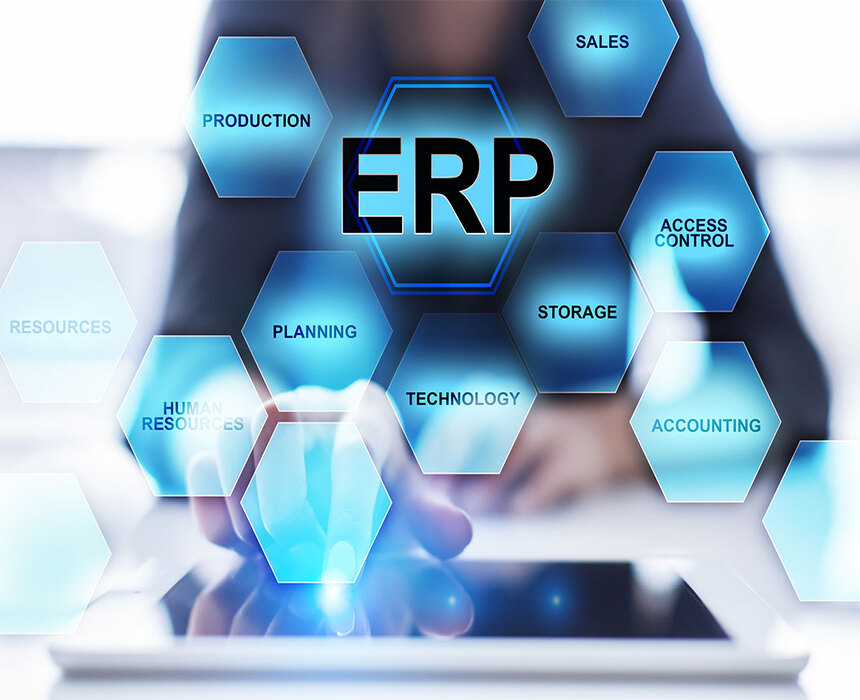An ERP (Enterprise resource planning) software is a complex system that allows companies to make significant gains in terms of time, profitability and management.
Imported from the USA, this software solution aims to unify the information system of a company by integrating the various functional components around a single database. In other words, it is a type of software that allows the management of daily activities such as:
- purchasing management
- inventory management
- commercial/sales management
- production management
- accounting management
- project management
- risk management and compliance
- etc.
The principle of an ERP is to centralize the company’s database. This means that entering or modifying data in any of the modules (sales management, inventory management, production management, etc.) has an impact on all the other modules: the database is updated and applies the modification to the entire company.
For example, if a sales entry is recorded in the company’s management system by a staff member, this entry is automatically and instantly replicated to all other processes. Whether it’s in inventory or production, or in accounting data such as the sales journal, or in sales.
Clearly, the positive aspects of such a system appear especially in comparison to when the different departments were managed separately:
- The time saving inherent in the elimination of multiple data records by different processes for the same operation as is the case when these records are manual.
- Reduction or elimination of duplicate entries that may occur.
- Limiting the loss of data due to computer bugs or human errors.
- Reduce the possibility of data tampering.
- Thanks to ERP, process conformity controls and element verification is much easier for management controllers.
In summary, an ERP contributes to the growth of global performance by simply allowing optimized processes, a unified database accessible by different departments of the company in real time, and time savings in data management and control.
